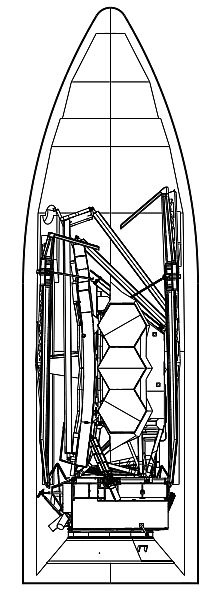In the book “Aliens: the World’s leading scientists in search for extraterrestrial life” by Jim Al Khalili I read the following anecdote of one of those leading scientists: Enrico Fermi.
Enrico Fermi
Enrico Fermi, the Italian-born American Nobel Prize winning physicist, made some of the most important contributions to twentieth-century science, but in 1950 he posed a very simple question that had nothing to do with his research in nuclear physics. It did, however, have very profound implications for anyone who is interested in the question of extraterrestrial life, as I assume you are since you are reading this blog.
The story goes that the question in question came up during a lunchtime chat he was having with colleagues at the Los Alamos National Laboratory in New Mexico, sometime home of the Manhattan Project. They had been discussing the possibility that the Earth had been visited by aliens in flying saucers (the Roswell incident was just a few years earlier). The conversation was light-hearted and it doesn’t appear that any of the scientists at that particular gathering actually believed in aliens. But Fermi asked a very simple question: ‘Where is everybody?’.
His point was that since the age of the Universe is so great and its size so vast, with almost half a trillion stars in the Milky Way alone, many of which would have their own planetary systems, then, unless the Earth is astonishingly and unjustifiably special, the Universe should be seething with life, including intelligent species advanced enough to have the knowledge and technology necessary for space travel. Surely then, he argued, we should have been visited by aliens at some point in our history.

Indeed, maybe those accounts of flying saucer sightings that were being reported at the time were true. For Fermi it was obvious that, assuming our planet was not unique, not only should it be overwhelmingly likely that intelligent life exists elsewhere, but that there has been plenty of time for any alien civilisation with modest expansion ambitions and a sufficiently well-developed space travel technology to have colonised the entire Galaxy by now.
So where are they all?
Interstellar travel
Fermi’s conclusion was that the distances required for interstellar travel are so great that, owing to the theory of relativity’s restriction that nothing can exceed the speed of light, no aliens would contemplate the ridiculously long journey to visit us.
It seems he did not consider the notion that we should nevertheless be able to detect the existence of technologically advanced alien civilisations even if they never leave their home planet. After all, for the past hundred years or so, we have been announcing our presence to any listening aliens advanced enough and close enough to us (which means within 600 trillion miles of Earth, because that corresponds to 100 light years: the distance light will have travelled in 100 years).
Faint signals of our presence
Ever since we invented radio and television, and more recently with the proliferation of satellite and mobile phone communication, we have been radiating our electromagnetic chatter into space. Any advanced enough aliens that are close enough to us and who happened to point their radio telescopes at our solar system would pick up faint signals betraying our presence.

Electromagnetic waves
Given that we have every reason to believe the laws of physics are the same everywhere in the Universe and that one of the easiest and most versatile means of transmitting information is by using electromagnetic waves, we should expect any advanced alien civilisation to use this form of communication at some point during its technological development. And if it has, then some of these waves will inevitably leak out into space, spreading radially outwards through the Universe at the speed of light.
Frank Drake and SETI
It is not surprising, therefore, that by the second half of the twentieth century, astronomers began to seriously consider the feasibility of listening out for such signals from space using their newly built radio telescopes. The search for extraterrestrial intelligence (or SETI) began with the pioneering efforts of one man, Frank Drake, who is probably most famous for coming up with a simple equation that bears his name and which includes all the factors he thought were necessary to provide an estimate of the likelihood that alien intelligence exists somewhere else in the Universe (see other Extraterrestrial entries elsewhere on this site).
Project Phoenix
Between 1995 and 2004, Project Phoenix used radio telescopes in Australia, the USA and Puerto Rico to look at hundreds of Sun-like stars within a couple of hundred light years of Earth. So far, they have heard nothing. But the project has produced a valuable source of information for research into possible alien life.
Today, hunting for extrasolar planets (those orbiting stars other than our Sun) is one of the hottest areas of scientific research, and with bigger and more powerful radio telescopes at their disposal, astronomers are discovering new, potentially habitable star systems on a regular basis. Indeed, it seems that barely a month goes by without news of new Earth-like planets that have the potential to harbour life.

James Webb Space Telescope
Much excitement currently surrounds the James Webb Space Telescope (JWST) , due to be launched on December 18, 2021 during Ariane flight VA256, that will represent the next generation of space telescopes and will be the first that is truly capable of detecting the biosignatures of alien life.
The JWST is a space telescope being jointly developed by NASA, the European Space Agency (ESA), and the Canadian Space Agency (CSA). It is planned to succeed the Hubble Space Telescope. The JWST will provide improved infrared resolution and sensitivity over Hubble, and will enable a broad range of investigations across the fields of astronomy and cosmology, including observing some of the most distant events and objects in the universe, such as the formation of the first galaxies, and detailed atmospheric characterization of potentially habitable exoplanets.
